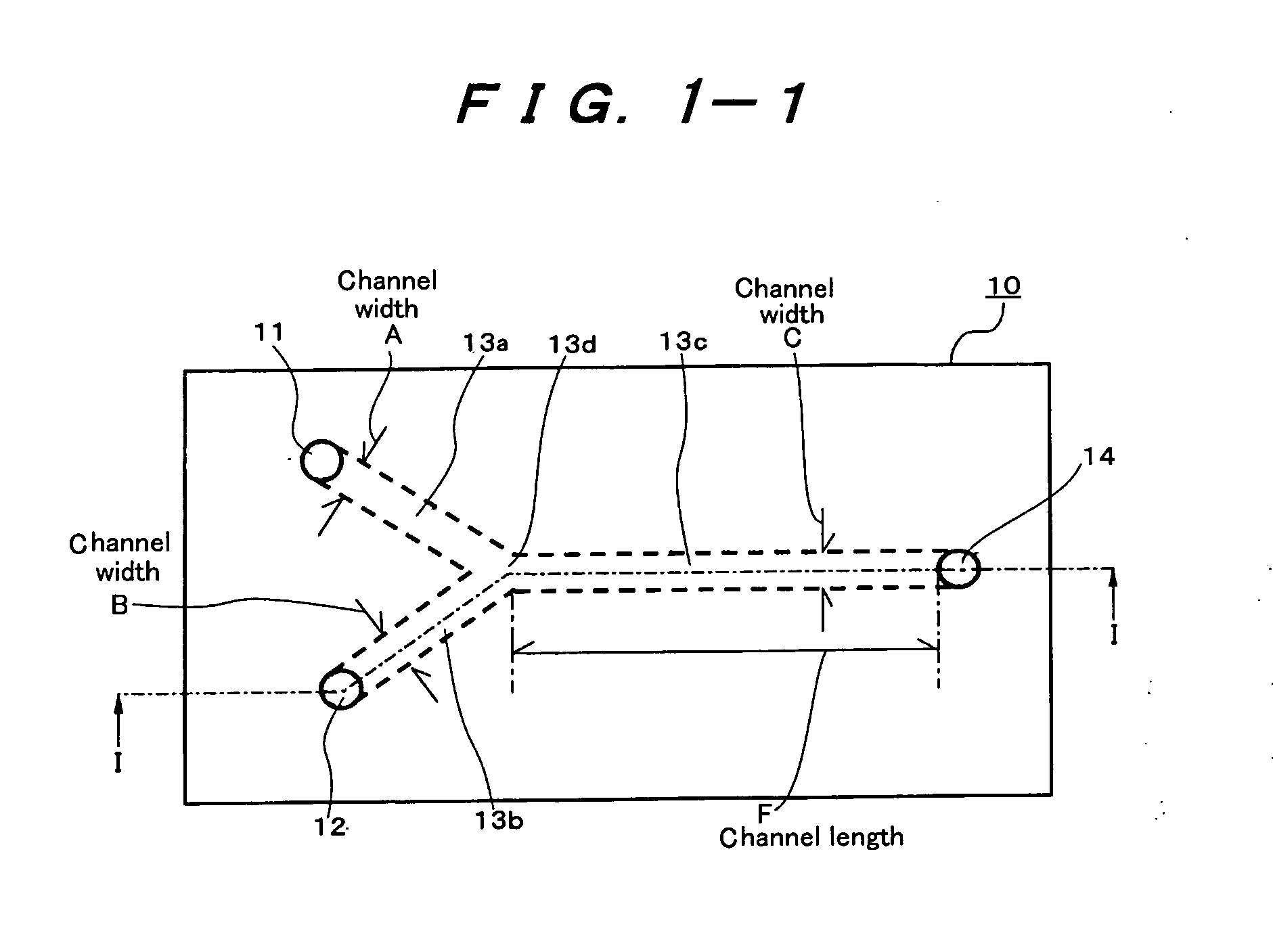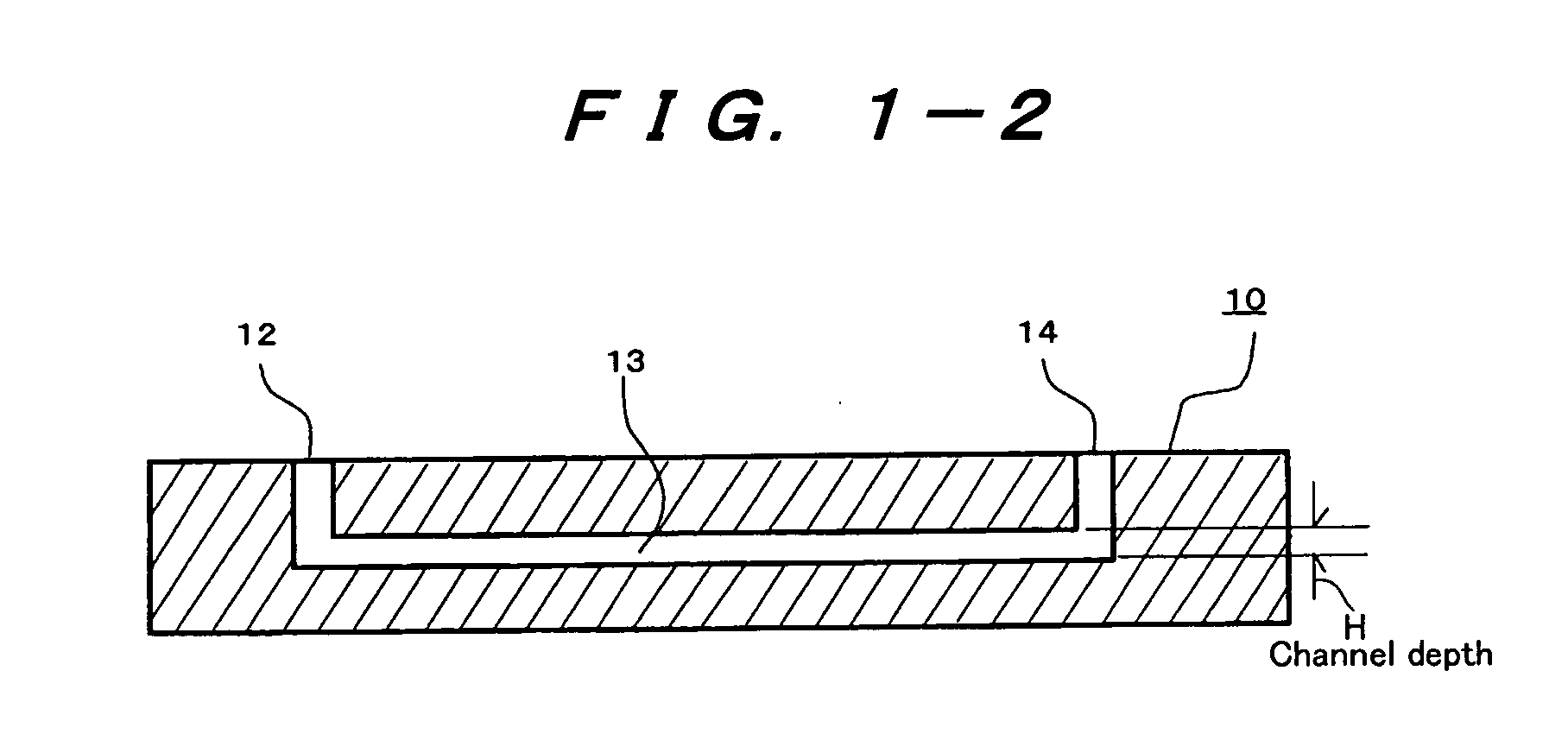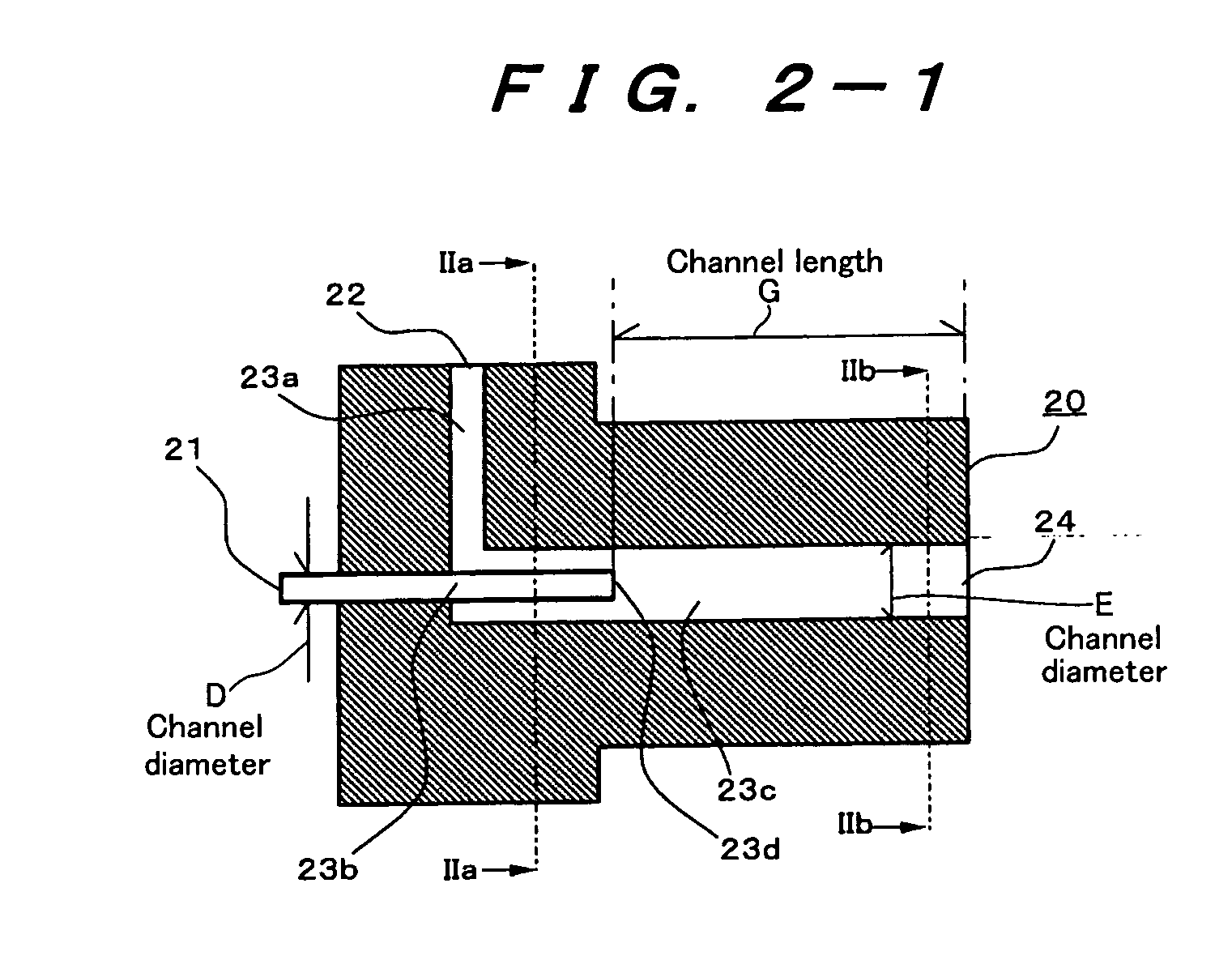Method or producing an organic pigment dispersion liquid and organic pigment fine particles obtained by the method
a technology of organic pigments and dispersion liquids, applied in the direction of quinacridones, organic dyes, chemistry apparatuses and processes, etc., can solve the problems of poor close bonding of pigments in images to paper, poor uniform formation of pigments, and low productivity
- Summary
- Abstract
- Description
- Claims
- Application Information
AI Technical Summary
Benefits of technology
Problems solved by technology
Method used
Image
Examples
example 1
[0143] First, 0.5 g of 2,9-dimethylquinacridone (HOSTAPERM PINK E, manufactured by Clariant Co. Ltd.) was dissolved at room temperature in 5.0 mL of dimethylsulfoxide, 0.85 mL of methanol solution (manufactured by Wako Pure Chemical Industries, Ltd.) of 28% sodium methoxide, and 2.0 mL of a DMSO solution of 25% Aqualon KH-10 (manufactured by Dai-ichi Kogyo Seiyaku Co., Ltd.) (IA solution). The pH of the IA solution exceeded a measuring limit (pH 14), which was not able to be measured. Distilled water was designated as a IIA solution. They were allowed to pass through a micro-filter of 0.45 μm (manufactured by Sartorius Co.), whereby impurities such as dust were removed. Next, the reaction was effected in the following procedure, using a simple reactor having a channel configuration of a reactor in FIG. 1-1. More specifically, two Teflon (Registered Trademark) tubes having a length of 50 cm and an equivalent diameter of 1 mm were connected to two inlets of a Teflon (Registered Tradem...
example 2
[0147] A dispersion liquid was produced in the same way as in Example 1, except that Aqualon KH10 was replaced by an equivalent mass of styrene (special grade manufactured by Wako Pure Chemical Industries, Ltd.) to obtain a sample 2 for comparison. The volume average particle diameter Mv of the sample 2 was 44.5 nm, and the ratio of Volume average particle diameter Mv / Number average particle diameter Mn that is an index of monodispersibility was 1.88.
[0148] Next, the pigment dispersion was purified with an ultrafilter (UHP-25K, differential molecular weight: 200,000, manufactured by Advantec Co., Ltd.) while distilled water was added so that the liquid amount was kept.
[0149] Further, K2S2O8 corresponding to 1% amount of styrene contained in the pigment dispersion liquid was added, followed by heating at 70° C. for 5 hours, whereby a sample 2a of the present invention was obtained. The volume average particle diameter Mv of the sample 2a was 39.8 nm, and the ratio of Volume average...
example 3
[0151] A sample 1b of the present invention subjected to polymerization was produced in the same way as in Example 1, except that ultrafiltration was not conducted. The sample 1b had an Mv of 23.1 nm and Mv / Mn of 1.54. Further, the change ratio of a volume average particle diameter when the sample 1b was subjected to heating storage treatment in the same way as in Example 1 was 2.4%. Consequently, it is understood that the stability was enhanced by polymerization.
PUM
| Property | Measurement | Unit |
|---|---|---|
| diameter | aaaaa | aaaaa |
| equivalent diameter | aaaaa | aaaaa |
| equivalent diameter | aaaaa | aaaaa |
Abstract
Description
Claims
Application Information
 Login to View More
Login to View More - R&D
- Intellectual Property
- Life Sciences
- Materials
- Tech Scout
- Unparalleled Data Quality
- Higher Quality Content
- 60% Fewer Hallucinations
Browse by: Latest US Patents, China's latest patents, Technical Efficacy Thesaurus, Application Domain, Technology Topic, Popular Technical Reports.
© 2025 PatSnap. All rights reserved.Legal|Privacy policy|Modern Slavery Act Transparency Statement|Sitemap|About US| Contact US: help@patsnap.com



